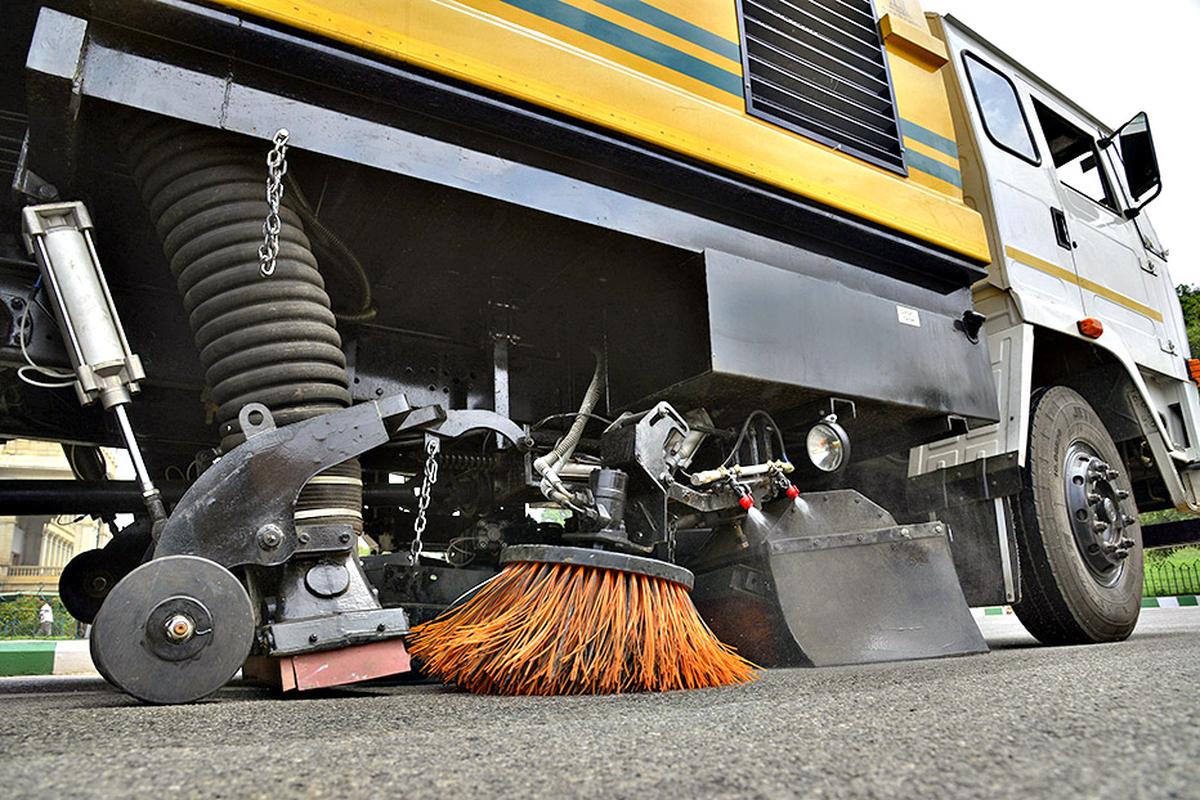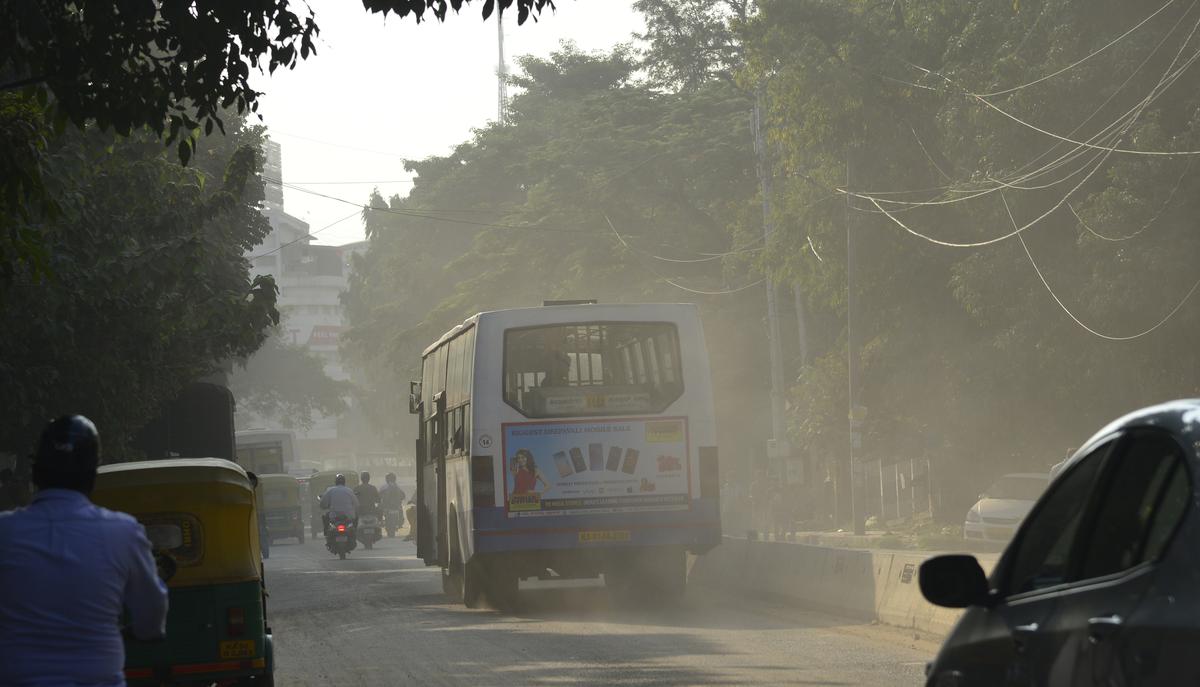No congestion killer plan will work when a city’s vehicle numbers are almost equal to its population. This is exactly where Bengaluru is trapped with its estimated 1.2 crore vehicles. But beyond the inevitable traffic jams, they have triggered an unprecedented spike in air pollution. A climate-tech start-up’s latest study shows that the city’s PM10 pollutant levels breached the national air quality standard for four years in a row, and it is getting even worse.
Rising construction dust, unaddressed road dust and waste-burning have all combined to trigger a never-before fall in the city’s once cherished air quality. With no letup in vehicle registrations and pollution regulations poorly monitored and executed, has Bengaluru reached a point of no return? Is the city heading the Delhi way? This might seem alarmist, but the signs are too loud and clear and the complacency too evident to be ignored.
The study by the start-up, Respirer Living Sciences, noted consistently high PM10 levels recorded at the city’s monitoring stations at Silk Board Junction, RVCE-Mailasandra, City Railway Station and Kasturi Nagar. Residential pockets such as BTM Layout and Hombegowda Nagar also crossed the safe annual average in the 2021-24 period. The message is clear: The pollution is spreading all across the city, and the fast-declining tree cover offers no respite.
Once the machines went idle, the Palike had tried manual clearing of roadside silt with pourakarmikas, outsourced workers and trucks.
| Photo Credit:
FILE PHOTO
Unswept roads, a major contributor
Road dust and vehicular movement complement each other in amplifying the PM10 particles. “Bengaluru’s roads are bad, but even the good roads are not swept daily. In 2017, as part of a Task Force, we had recommended mechanical sweepers to keep at least roads in the CBD areas free of dust. Now, they sweep only the roads around Vidhana Soudha and Raj Bhavan,” notes a veteran technical expert who was attached to the Karnataka State Pollution Control Board (KSPCB) for three decades. He adds that white-topped roads generate more dust particles since the friction is higher compared to asphalted streets.

Mini Mechanical Sweeping Machine.
| Photo Credit:
MURALI KUMAR K
If roads are not swept daily, the dust particles are stirred up by the fast-moving vehicles. “These particles can move up to 1km vertically. Besides, motorcyclists are also exposed since the breathing height is about 1.5 metres,” the expert points out. After the seven-year Operations and Maintenance (O&M) contract ended on February 28, the Bruhat Bengaluru Mahanagara Palike (BBMP) had faced widespread public complaints related to unclean roads, accumulated silt and blocked shoulder drains.
Once the machines went idle, the Palike had tried manual clearing of roadside silt with pourakarmikas, outsourced workers and trucks. Following negotiations, the contractor who operated the machines has reportedly agreed to continue the services for another six months. However, not all machines are fit to run and the funds-starved BBMP is struggling to maintain them. Of the 25 sweeping machines, eight are truck-mounted and 17 self-propelled.

Bengaluru had over 21 lakh two-wheelers and 7 lakh cars older than 15 years. However, private vehicles rarely show up at the registered vehicle scrapping facilities (RVSF) licensed by the state transport department.
| Photo Credit:
FILE PHOTO
Construction dust: No water sprays
Widespread dumping of construction debris on the roadsides amplifies the road dust problem. If not cleared in time, wind takes the dust all around the area. Making this even worse are lack of adequate measures to nip the pollutants at the construction site itself. While the Bengaluru Metro Rail Corporation Limited (BMRCL) has barricaded its sites and uses water sprays to limit the dust, no such measures are seen in thousands of building construction areas across the city.
Scrapping vehicles older than 15 years has been a national policy to combat urban air pollution. At last count, Bengaluru had over 21 lakh two-wheelers and 7 lakh cars older than 15 years. However, private vehicles rarely show up at the registered vehicle scrapping facilities (RVSF) licensed by the state transport department. One of the RVSFs is in Vijayapura near Devanahalli on the city’s outskirts, tasked with handling dated vehicles as per the Registered Vehicle Scrappage Policy of Karnataka, 2022.
Vehicular exhaust with harmful pollutants such as Carbon Monoxide (CO), Nitrogen Oxides (NOx), volatile organic compounds and particulate matter (PM), almost doubles as they age. These pollutants have been linked to multiple respiratory issues, eye irritation and cardiovascular problems. PM2.5 are so tiny that they could penetrate lungs, triggering serious health issues.
No safe threshold
The Respirer study had used the national air quality standard of 60 micrograms per cubic metre for PM10 as the base. But, as a Greenpeace India assessment ‘Spare the Air-2’ noted in 2024 September,
“The existing National Ambient Air Quality Standards (NAAQS) for pivotal pollutants are considerably less stringent than the WHO’s guidelines.” This study too had flagged rising air pollution concerns in Bengaluru, Mangaluru, and Mysuru.
Citing a 2024 Lancet report, the study had reiterated that short-term exposure to PM2.5 was associated with a heightened risk of mortality in India, even at levels well below the Indian standards. “This underscores the troubling reality that there may be no safe threshold for air pollution exposure,” the study report said.
Does Bengaluru have enough air quality monitoring stations relative to its size? While the city’s size, population density, local land use and industrial activities determine the number, a general guideline is one station for an area with 2 km radius. This works to about 15sqkm. But more stations would be required in areas with higher pollution sources. Currently, the city has 15 stations maintained by KSPCB and three by the Central Pollution Control Board (CPCB).
Mobile air quality sensors
To measure air quality more accurately and at high spatial resolution, the Center for Study of Science, Technology and Policy (CSTEP) had recommended a mix of static and non-conventional, less expensive, short-term stationary and mobile sensors. The Centre undertook a mobile monitoring campaign covering about 10% of roads in the city to measure on-road mass concentrations of PM2.5, black carbon and number concentrations of ultrafine particles (UFPs).
Based on the mobile measurements, it was found that on-road air pollution levels (for all three pollutants) were highest on major roads, followed by arterial and residential roads. The findings were summarized this way by CSTEP: “The spatial gradient in PM2.5 (across various road types) was shallower compared to that of BC and UFPs. The spatial representativeness of pollution maps increased when the number of drives on a route increased. On-road pollutant levels were higher than ambient pollution levels by a factor of 2 to 10. Ambient PM2.5 levels (and their spatial variability) were higher in winter compared to summer. Daily mean ambient PM2.5 levels were within Indian regulatory standards.”
Published – May 08, 2025 09:00 am IST


